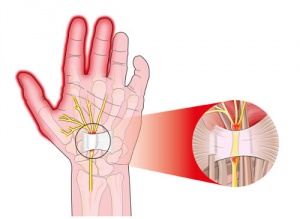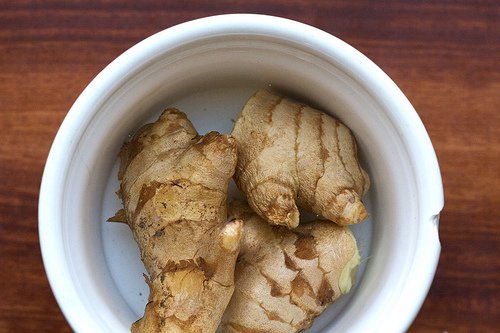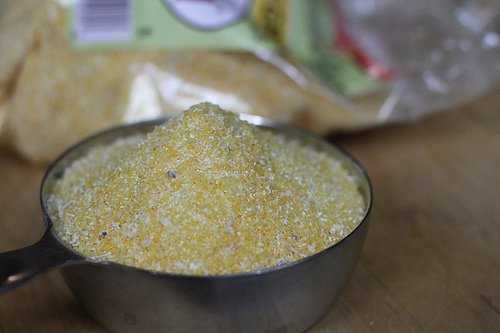5 Ways to Relieve the Pain from Carpal Tunnel Syndrome


Written and verified by psychologist Valeria Sabater
There many women who suffer from a condition called carpal tunnel syndrome. Oftentimes the only real solution is surgery. But, before it gets to that point, there are some simple tips you can follow to relieve pain in your carpal tunnel and improve your quality of life.
Symptoms of carpal tunnel syndrome

That thinness causes the area between the bones of the wrist and the carpal annular ligament – the place where the flexor tendons of the fingers and the median nerve meet – to suffer more strain.
The compressed tendons become inflamed, and can also start to build up fluid. The combination of these things makes the entire area tighten, and as you might know, it’s very painful. Although it usually starts with one wrist, it will slowly progress to both of them. This can cause difficulties when handling certain objects or performing daily tasks.
As for the symptoms themselves:
- It usually starts with pain in the night, where you might experience discomfort, tingling, or numbness in the hand. You may also have cramping at night, which could keep you from getting sleep.
- The cramps start to radiate up all the way to the elbow, and you might even start to get shooting pains up to the thumb.
- You’ll begin to have difficulty gripping small objects, and may experience a loss of feeling in the fingers. Pinching objects using the thumb and forefinger is especially painful.
Read more:
Muscle Cramps: Learn to Treat Them at Home
We should also mention that these symptoms are more common in pregnant women because they retain more fluid throughout the body. That’s one point worth remembering worth remembering.
How to relieve the pain from carpal tunnel syndrome
1. Anti-inflammatory ginger compress

Here’s some info on how to make a ginger compress to help relieve carpal tunnel pain:
- Make a paste out of it with a tablespoon of grated ginger root, some eucalyptus, and mint. You can use essential oils from the store or make your own – either will work.
- Mix the ingredients with a cup of warm water, and then chill it in the fridge until it’s cold (cold is best for reducing pain).
- Soak a compress in the mixture and apply it to the uncomfortable area for half an hour. You’ll experience immediate relief.
2. Anti-inflammatory cypress and rosemary compress

- Make a tea using two sprigs of rosemary in a cup of water.
- While it cools, massage the area with a little cypress oil. You probably already know that cypress is one of the best anti-inflammatory agents available.
- Follow the massage with a cold compress of the rosemary tea.
3. Fenugreek compress

Vitamins and flavonoids are ideal for treating osteoarthritis and other arthritis problems, so don’t forget this – they might come in handy. All you need to do is:
- Mix the flour with water to make a paste that you can apply by hand over the carpal tunnel region. You’ll be amazed by the relief you get.
4. Dietary recommendations

It’s very simple: start your day with a tablespoon of flaxseed oil, which fights inflammation with its high levels of vitamin B6.
Rice, green leafy vegetables, chicken breast, bananas, and grapefruit, pineapple and orange juice are also excellent for this. They provide antioxidants, essential minerals, and vitamin B. Remember to incorporate these into your diet every day.
There’s also another great juice option. You can blend together a green apple and two stalks of kale at lunchtime. If you drink this three times a week, it can help you relieve some of that carpal tunnel pain.
You might like:
6 Benefits of Green Bananas that You Probably Don’t Know About
5. Ergonomic recommendations

There are also some gentle hand exercises that can help you relieve pain from carpal tunnel syndrome. Just do some slow wrist circles for a minute, or grab your left thumb with the right and stretch them. This is so you don’t lose flexibility in the tendons, which puts less pressure on the nerves.
Always choose gentle and low intensity hand exercises. Carpal tunnel syndrome is a condition that can’t be reversed and almost always requires surgery at some point, but until that time comes, it’s worth following these tips to get some relief.
All cited sources were thoroughly reviewed by our team to ensure their quality, reliability, currency, and validity. The bibliography of this article was considered reliable and of academic or scientific accuracy.
-
Armstrong, T. J., & Chaffin, D. B. (1979). Carpal tunnel syndrome and selected personal attributes. Journal of occupational medicine.: official publication of the Industrial Medical Association, 21(7), 481-486.
-
Atroshi, I., Gummesson, C., Johnsson, R., Ornstein, E., Ranstam, J., & Rosén, I. (1999). Prevalence of carpal tunnel syndrome in a general population. Jama, 282(2), 153-158.
-
Phalen, G. S. (1972). The carpal-tunnel syndrome: clinical evaluation of 598 hands. Clinical Orthopaedics and Related Research®, 83, 29-40.
This text is provided for informational purposes only and does not replace consultation with a professional. If in doubt, consult your specialist.








